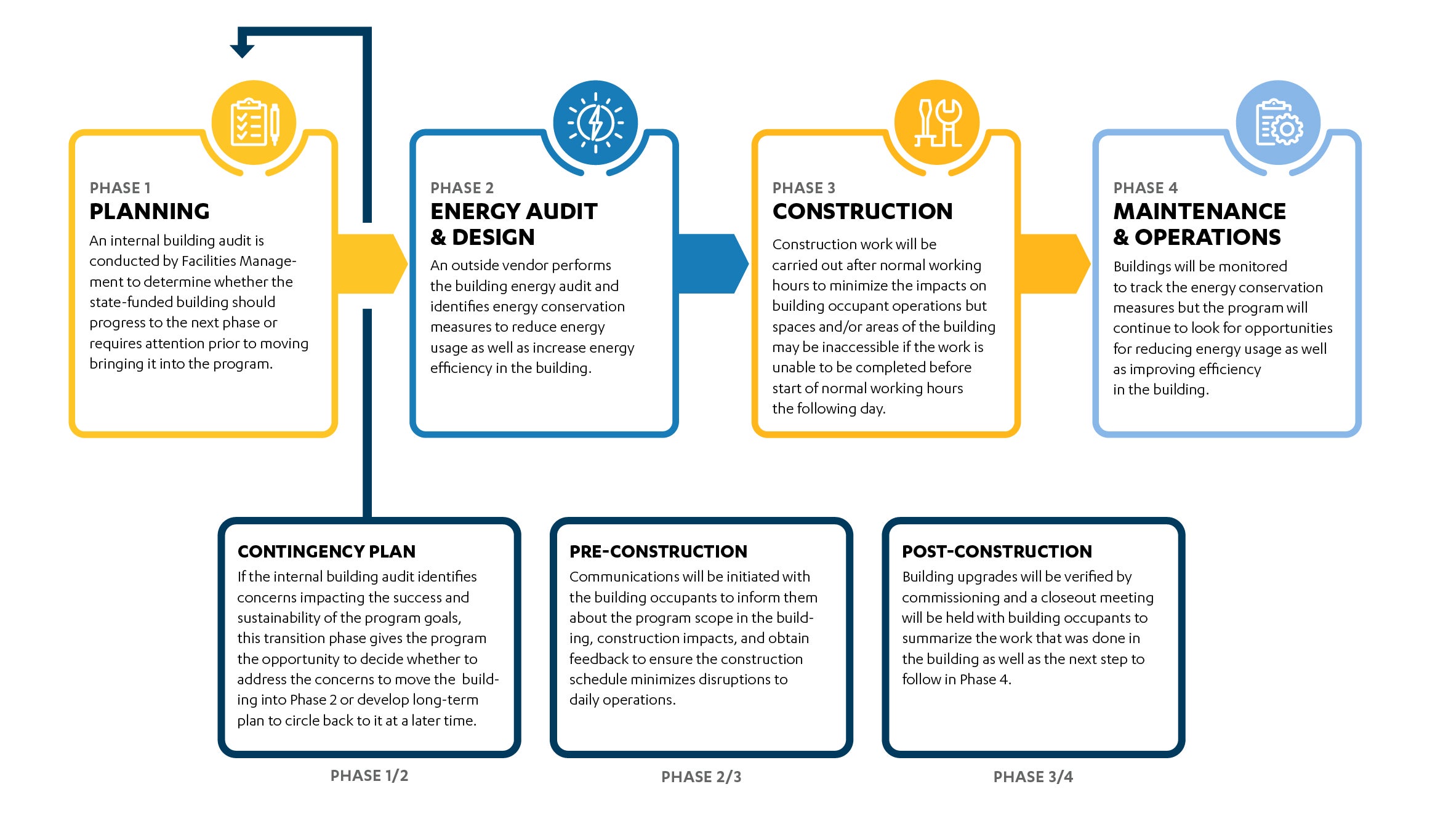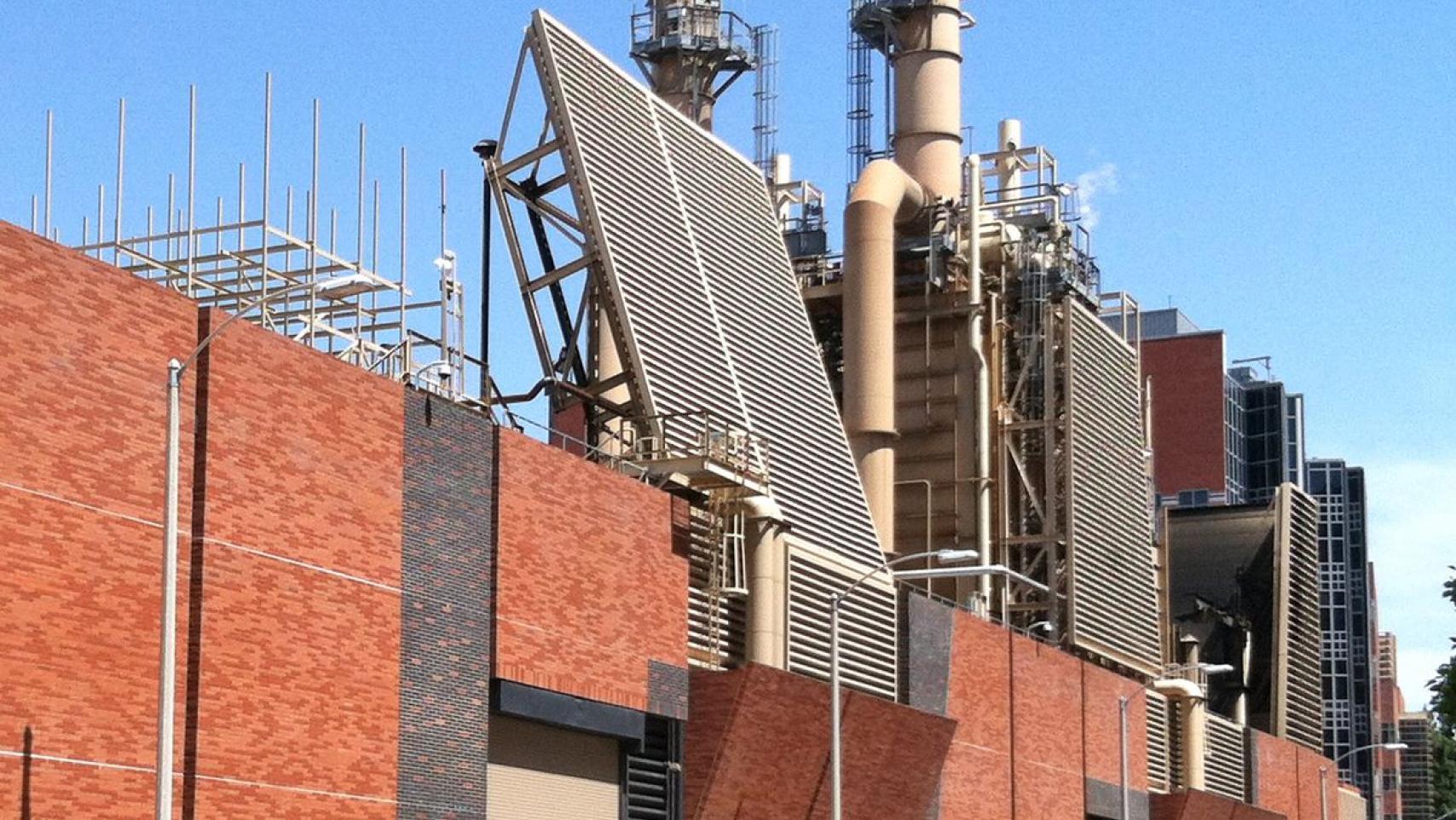What is a Smart Building/Lab?
A Smart Building/Lab is designed to operate with intelligence and align with campus energy conservation initiatives while maintaining a safe working environment for impacted stakeholders.
Why was the program created?
The program was created to help meet UC Office of the President’s carbon neutrality initiative and UC’s sustainability practices policy. Additionally, the cogeneration plant is near its capacity limit. Originally constructed in 1993, the plant has since taken on supporting an additional 42% increase to the campus square footage.
• Energy Services (Manages campus utilities)
• Design & Project Management (Project management and construction lead)
• Maintenance & Alterations (Maintains and operates campus utilities)
• Industrial Hygienist (Oversight for health and safety of building occupants)

Most ECMs will go unnoticed, but the following are ECMs that will impact building occupants in Smart Buildings/Labs:
• Ventilation
• Ventilation will make less noise when operating at lower ventilation rates
• Ventilation in non-research buildings/areas will operate on a schedule based on the building's hours of operation
• Temperature
• Facilities Management will reinforce the campus standard for temperature set points
• Existing comfort issues may be attributed to large equipment, layout, and/or use of space
• Occupancy Sensors
• Ventilation and lighting operations will be connected to occupancy sensors
• Occupancy sensors will detect both motion and sound
• Door & Window Sensors
• Ventilation will turn off when a door or window is opened for natural ventilation
• LED Lighting
• Light intensity may differ from what building occupants were accustomed to in the past
• Lighting will turn off when the space becomes unoccupied
Click here for more information regarding the ECM impacts
• Call in urgent issues requiring immediate response from Facilities Management at (310) 825-9236
• Service Requestsfor all other facility issues via online or the UCLA 311 Application
• Facilities Service Request (FSR)for any addition, replacement, and/or removal impacting the building
• EH&Sfor safety-related issues in the building
• Utilize spaces appropriately as designed, not as intended
• Improper use of the space may create ventilation and/or comfort issues in other spaces of the building
• If ventilation and/or comfort issues persist, an FSR may need to be submitted to upgrade the spce
• Plan and schedule work in spaces ahead of time
• Ventilation systems in non-research buildings will operate based on theSmart HVAC Scheduling Program
• There is great potential for increasing energy efficiency by ventilating based on occupancy and operations
• Be aware that the building system has limitations and is impacted by the habits of building occupants
• Turn off the lights when the last to leave a space
• Keep doors to the building's main corridors closed at all times

